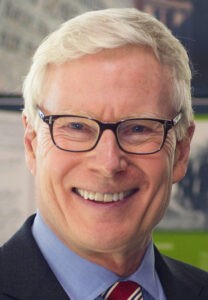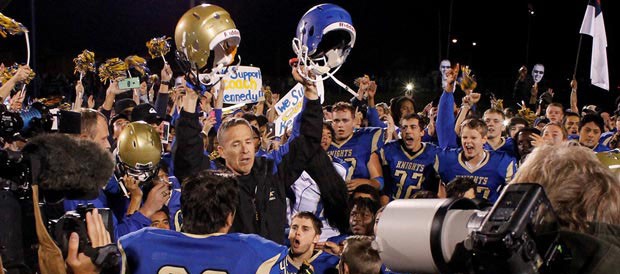Next Monday, the U.S. Supreme Court will hear oral arguments in Kennedy v. Bremerton, a dispute involving high school football coach Joseph Kennedy, who refused to stop holding post-game prayers on the field and later sued the Bremerton, Wash., school district.
Kennedy claims his 50-yard line prayers were private prayers protected by the First Amendment.

Charles Haynes
Of course coaches, like all Americans, have a right to the free exercise of religion. But when they sign up to serve in a public school, coaches agree to uphold the prohibition on government endorsement of religion mandated by the Establishment Clause of the First Amendment. Kennedy’s prayers occurred while he was still on duty, and students came to midfield to join his prayers.
School officials point out that Kennedy had been organizing prayer with students after games for more than seven years. After stopping for a brief time, Kennedy resumed praying on the field with students and refused the school’s offer of alternative places to pray in private.
Joseph Kennedy’s attempt to push the constitutional envelope by praying with students is a familiar story. Over the past 30 years, I have — together with religious liberty attorney Oliver Thomas — mediated scores of disputes like this and given First Amendment training to thousands of coaches, teachers and administrators in school districts across the country.
“Coaches have been among the most challenging staff members to persuade to uphold the law.”
Coaches have been among the most challenging staff members to persuade to uphold the law. Coaches often see it as part of their job to share Christ and pray with their team. If told to stop, some coaches find creative ways to “take a knee” or otherwise circumvent what is required of them under the First Amendment.
In our discussions with coaches and teachers, we often ask them to put on their “First Amendment hat” when arriving at school each day — and keep it on as long as they are on the job. As authority figures and government employees, they must be neutral, honest brokers protecting the rights of all students. If they wish to pray during the school day, they must do so outside the presence of students.
Encouraging school officials to practice religious neutrality while guarding religious liberty for students has been the national consensus for many years. And it works.
The guidelines we offer over what current law requires — developed through years of negotiation — appeal to most coaches and teachers, leading to greater understanding of the constitutional role of religion in public schools. Left to right, many religious and educational groups have long agreed that public schools may neither inculcate nor inhibit religion. School officials must be neutral among religions and between religion and non-religion.
At the same time, schools must ensure that the religious liberty rights of all students — religious and non-religious — are protected. For coaches, this means refraining from praying with students. It also means allowing players who wish to do so to pray without pressuring fellow students to join in.
Consider that today, some 30 years after this consensus was first formed, there is more academic study of religions and more constitutional student religious expression in schools today than at any time in many decades. Contrary to culture war myths, religion does come into public schools, but thanks to legal guidelines, it arrives mostly through a First Amendment door.
“Contrary to culture war myths, religion does come into public schools, but thanks to legal guidelines, it arrives mostly through a First Amendment door.”
Should Joseph Kennedy prevail, this long settled and widely held consensus about the constitutional role of religion in public schools could be upended. New First Amendment lines could be drawn, eroding the requirement of neutrality toward religion by school officials now required under current law.
If that happens, what would we say to coaches and teachers? It is fine to pray with students if you label it “private prayer?” What would we say to students who feel coerced into joining the coach in prayer for fear of retribution? How would we instruct administrators on where to draw the line when teachers insist on practicing their religion in the presence of students?
In short, if the Supreme Court uses this case to redraw First Amendment boundaries in schools — which is very possible given its current makeup — decades of effort to get religious liberty right in public schools could be at risk.
Make no mistake: This case has nothing to do with the right to private prayer. Instead, it is about protecting the conscience of every student by requiring religious neutrality of school officials during the school day. That is — or should be — the core meaning of “no establishment” under the First Amendment.
Charles Haynes is senior fellow with the Freedom Forum Religious Freedom Center.
Related articles:

